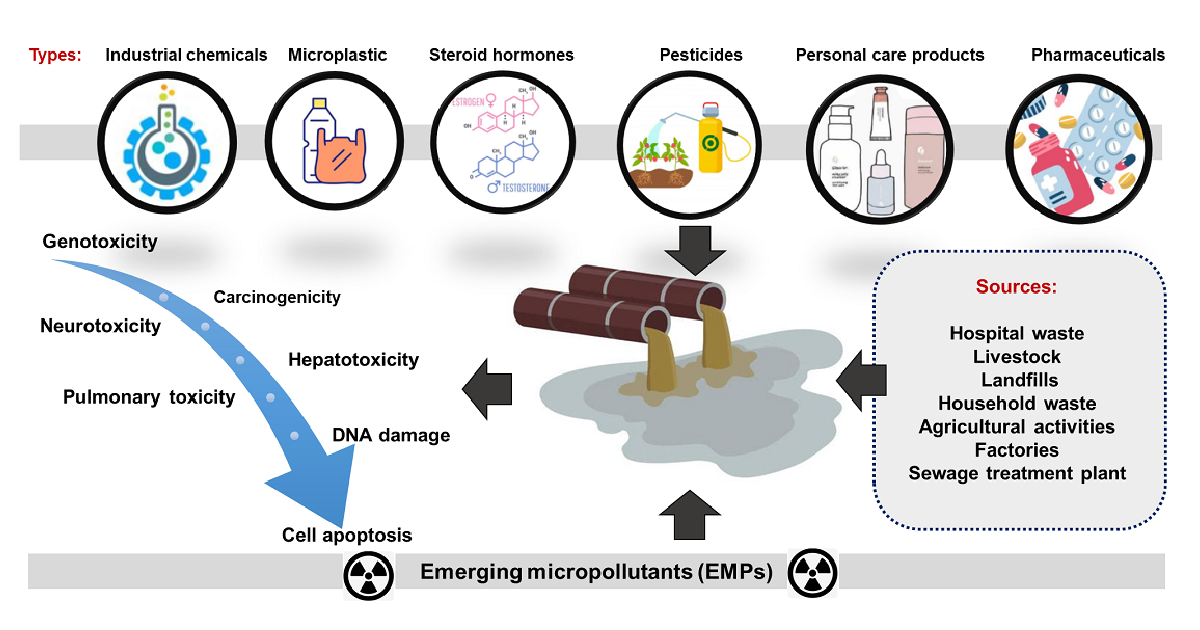Emerging Micropollutants in Water and Wastewater: Recent Tendencies, Treatment Options and Perspectives
A special issue of Water (ISSN 2073-4441). This special issue belongs to the section "Wastewater Treatment and Reuse".
Deadline for manuscript submissions: 20 May 2025 | Viewed by 4438

Special Issue Editors
Interests: sorption; separation; removal; recovery; heavy and noble metals; dyes; phenols; textile wastewaters treatment; ion-exchange resins; synthetic oxide materials; hybrid materials; low-cost adsorbents; environmental protection
Special Issues, Collections and Topics in MDPI journals
Interests: sorption; separation of inorganic and organic compounds; heavy metal ions; dyes; phenols; textile wastewaters treatment; chemical modification of synthetic and natural polymers; adsorbents for water treatment; hybrid materials; low-cost adsorbents; ion-exchange resins; synthetic oxide materials; photochemistry; environmental protection
Special Issues, Collections and Topics in MDPI journals
Special Issue Information
Dear Colleagues,
Emerging micropollutants (EMPs) also called as contaminants of emerging concern are discharged into the environment from a diverse range of sources and are of special concern to scientific researchers around the world. EMPs are synthetic or natural compounds derived from point and nonpoint resources and are characterized by trace amounts usually ranging from μg/L to less than ng/L among different environmental matrices and living organisms. Commonly known groups of EMPs are pesticides, persistent organic pollutants, pharmaceuticals, personal care products, detergents, stimulants, steroid hormones, trace metals, micro- and nanoplastics, industrial chemicals, pesticides and many other contaminants that might pose possible threats to ecological environments. Although the effects of EMPs in the aquatic environments are not very yet well known, there are clear indications considering their negative impacts on the ecosystem. Toxicity, ability to bioaccumulation and resistance to degradation are the main reasons for their potential risks.
Novel and emerging micropollutants in water or wastewater have made traditional treatment strategies ineffective in meeting environmental standards. The treatment processes of EMPs comprise several approaches such as physico-chemical, biological and advanced oxidation processes. Most of the conventional known wastewater treatment methods are not designed to completely remove EMPs but employ a combination of different treatment methods that can enhance the removal efficiency of emerging micropollutants. The selection of a suitable treatment method depends, among others, on the type of emerging micropollutants present, the contaminated water or wastewater source and the requirements of environment standards.
This Special Issue aims to encourage researchers working with the questions of emerging micropollutants to publish their scientific articles, reviews or short communications in this area to make progress in the field and in the implementation of practical solutions. Therefore, we are pleased to invite specialists and researchers closely related to this area to cooperate and encourage them to share their knowledge and experience not only in the removal of EMPs but also in their toxicity impacts and migration in the aquatic environments.
This Special Issue of Water will collect the results of the newest research trends, technologies and perspectives in the field of emerging micropollutants removal and will provide the current state of the art in the area.
Dr. Anna Wołowicz
Dr. Monika Wawrzkiewicz
Guest Editors
Manuscript Submission Information
Manuscripts should be submitted online at www.mdpi.com by registering and logging in to this website. Once you are registered, click here to go to the submission form. Manuscripts can be submitted until the deadline. All submissions that pass pre-check are peer-reviewed. Accepted papers will be published continuously in the journal (as soon as accepted) and will be listed together on the special issue website. Research articles, review articles as well as short communications are invited. For planned papers, a title and short abstract (about 100 words) can be sent to the Editorial Office for announcement on this website.
Submitted manuscripts should not have been published previously, nor be under consideration for publication elsewhere (except conference proceedings papers). All manuscripts are thoroughly refereed through a single-blind peer-review process. A guide for authors and other relevant information for submission of manuscripts is available on the Instructions for Authors page. Water is an international peer-reviewed open access semimonthly journal published by MDPI.
Please visit the Instructions for Authors page before submitting a manuscript. The Article Processing Charge (APC) for publication in this open access journal is 2600 CHF (Swiss Francs). Submitted papers should be well formatted and use good English. Authors may use MDPI's English editing service prior to publication or during author revisions.
Keywords
- emerging micropollutants (heavy metals; dyes; surfactants; pharmaceuticals; pesticides; hormones; organic compounds; detergents etc.)
- advanced water treatment
- membrane processes
- advanced oxidation processes
- pollution control
- wastewater treatment
- removal strategies
- adsorption
- health risk
Benefits of Publishing in a Special Issue
- Ease of navigation: Grouping papers by topic helps scholars navigate broad scope journals more efficiently.
- Greater discoverability: Special Issues support the reach and impact of scientific research. Articles in Special Issues are more discoverable and cited more frequently.
- Expansion of research network: Special Issues facilitate connections among authors, fostering scientific collaborations.
- External promotion: Articles in Special Issues are often promoted through the journal's social media, increasing their visibility.
- e-Book format: Special Issues with more than 10 articles can be published as dedicated e-books, ensuring wide and rapid dissemination.
Further information on MDPI's Special Issue polices can be found here.






